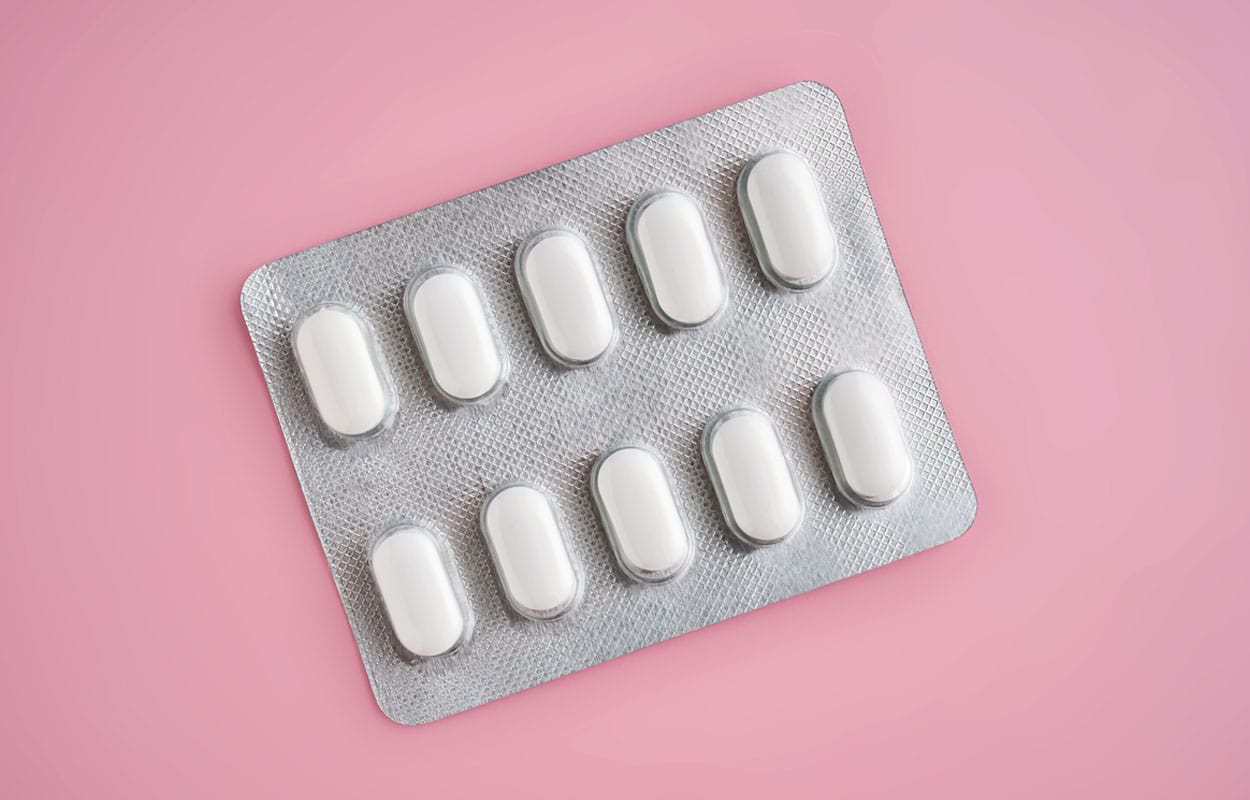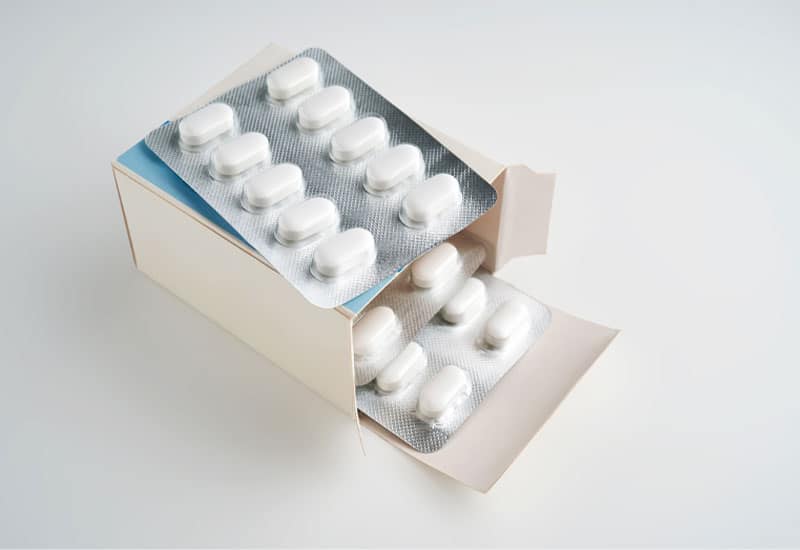Is Tramadol Addictive? The Habit Forming Potential of Tramadol
Medically Reviewed By:
Written By:
Updated On: July 7, 2025
Last Medical Review On: July 7, 2025

Table of Contents
Key Points
- Tramadol is a prescription pain medication that works on opioid receptors and brain chemicals to treat moderate to severe pain conditions.
- The medication is addictive and can cause physical dependence within weeks, even when taken as prescribed by doctors.
- Misusing tramadol creates serious risks, including seizures, serotonin syndrome, respiratory depression, and potentially fatal overdoses.
- Treatment for tramadol addiction requires medical supervision to prevent dangerous withdrawal symptoms and address underlying mental health conditions.
Tramadol carries a significant risk of habit formation and addiction, despite being marketed as a safer alternative to traditional opioids. This prescription pain medication works through multiple pathways in the brain, affecting both opioid receptors and neurotransmitters like serotonin and norepinephrine.
Many patients and prescribers initially believed tramadol had lower abuse potential than other opioids, but clinical experience and research have revealed substantial risks for physical dependence and psychological addiction. The Drug Enforcement Administration reclassified tramadol as a controlled substance after reports of widespread misuse and addiction cases.
What is Tramadol?
Tramadol is a prescription pain medication that belongs to a class of drugs called synthetic opioids or opioid analgesics.[1] This medication works through a dual mechanism of action, binding to opioid receptors in the brain while also blocking the reuptake of serotonin and norepinephrine neurotransmitters. The combination mechanism makes tramadol effective for treating moderate to moderately severe pain in adults, including chronic conditions, post-surgical recovery, and injury-related discomfort. Prescribers often choose tramadol for patients who need more substantial pain relief than over-the-counter medications can provide but may not require more potent opioids.
The medication comes in several formulations, including immediate-release tablets, extended-release tablets, and capsules with different dosing schedules.[2] Common brand names include Ultram, Ultram ER, ConZip, and various generic versions that contain the same active ingredient. Prescribers typically start patients on lower doses and adjust based on pain response and tolerance, with daily doses ranging from 50 mg to 400 mg depending on the specific formulation and patient needs. Tramadol requires a prescription and is now classified as a Schedule IV controlled substance due to its potential for abuse and dependence.
What is Tramadol Prescribed For?
Prescribers recommend tramadol for pain conditions that require more substantial relief than over-the-counter medications alone can provide:[3]
- Chronic back pain: Long-term pain in the lower or upper back caused by injury, degenerative conditions, or muscle strain.
- Arthritis pain: Joint pain and inflammation associated with osteoarthritis, rheumatoid arthritis, or other inflammatory conditions.
- Post-surgical pain: Pain management following surgical procedures when patients need moderate to strong pain relief.
- Fibromyalgia: Chronic widespread muscle pain and tenderness throughout the body that doesn’t respond well to other treatments.
- Neuropathic pain: Nerve pain caused by diabetes, shingles, or other conditions that damage nerve tissue.
- Cancer pain: Pain associated with cancer treatment or tumor growth that requires ongoing pain management.
- Injury-related pain: Acute pain from fractures, sprains, or other traumatic injuries that need stronger pain control.
- Dental pain: Severe tooth pain or post-dental procedure pain when other pain relievers prove insufficient.
Is Tramadol Addictive?
Tramadol is addictive and has the potential for abuse, physical dependence, and psychological addiction.[4] The medication affects the brain’s reward system through its opioid receptor activity, creating euphoric effects that can lead to compulsive use patterns. People may develop tolerance to tramadol, requiring higher doses to achieve the same pain relief, which increases addiction risk.
The drug’s dual action on both opioid receptors and neurotransmitter systems creates complex addiction pathways that can be particularly challenging to overcome. Many people who become addicted to tramadol initially received legitimate prescriptions for pain management, but gradually developed dependence through regular use.
Physical dependence on tramadol can develop within weeks of regular use, even when taken as prescribed by a doctor.[5] Stopping tramadol abruptly can trigger withdrawal symptoms, including anxiety, sweating, nausea, tremors, and in severe cases, seizures due to the medication’s effects on serotonin levels. The withdrawal process from tramadol often proves more complicated than other opioids because patients must manage both opioid withdrawal symptoms and serotonin-related effects.
The Dangers of Tramadol Misuse
Misusing tramadol creates serious health risks that can result in complications and permanent damage to multiple organ systems:[6]
- Seizure risk: Taking high doses or combining tramadol with other medications significantly increases the risk of dangerous seizures that can cause brain damage.
- Serotonin syndrome: Combining tramadol with antidepressants or other serotonin-affecting drugs can cause a potentially fatal condition with high fever and organ failure.
- Respiratory depression: Taking excessive amounts can slow or stop breathing, leading to brain damage or death from oxygen deprivation.
- Overdose complications: Tramadol overdoses can cause coma, seizures, and cardiac arrest, especially when combined with alcohol or other depressants.
- Withdrawal seizures: Stopping tramadol abruptly after prolonged misuse can trigger life-threatening seizures that require immediate medical attention.
- Liver damage: Chronic misuse or combining tramadol with acetaminophen-containing medications can cause severe liver toxicity and failure.
- Heart problems: High doses can cause irregular heartbeat, dangerously low blood pressure, and other cardiovascular complications.
- Mental health deterioration: Long-term misuse can worsen depression, anxiety, and suicidal thoughts due to changes in brain chemistry.
- Tolerance and escalation: Regular misuse leads to tolerance, requiring increasingly dangerous doses to achieve desired effects.
Tramadol Abuse and Addiction
Tramadol abuse often begins when people crush or chew extended-release tablets to bypass the time-release mechanism and achieve faster, more intense effects. Some people combine tramadol with alcohol, benzodiazepines, or other substances to enhance its sedating properties, creating dangerous drug interactions that can prove fatal. Others obtain multiple prescriptions from different doctors or purchase tramadol illegally online to support their increasing usage patterns.
Signs of tramadol addiction include taking the medication more frequently than prescribed, experiencing cravings when doses wear off, and continuing use despite negative consequences like job loss or relationship problems. People may spend excessive time obtaining, using, or recovering from tramadol, neglecting responsibilities and social activities. Doctor shopping (seeing multiple physicians to try to get the prescription you want), prescription forgery, or stealing medication from others indicates serious addiction that requires immediate professional intervention.
Addiction Treatment For Tramadol
Tramadol addiction treatment requires comprehensive medical care that addresses both the physical dependence and underlying mental health conditions that often accompany substance use disorders. Medical detox provides supervised withdrawal management to prevent life-threatening complications like seizures and serotonin syndrome, which can occur when stopping this Schedule IV controlled substance abruptly. Healthcare professionals use evidence-based tapering protocols that gradually reduce tramadol doses over extended periods of time while monitoring for severe withdrawal symptoms, including mood swings, cravings, and central nervous system effects.
Dual diagnosis care becomes essential since many people with tramadol dependence also struggle with depression, anxiety, or chronic pain conditions that contributed to their initial prescription drug misuse.
Mental health care plays a crucial role in tramadol addiction treatment since this analgesic affects serotonin and norepinephrine levels, often worsening underlying psychiatric conditions. Many people developed tramadol dependence while managing legitimate severe pain or mental health symptoms, requiring specialized pain management strategies and psychiatric medication adjustments during recovery. Dual diagnosis treatment simultaneously addresses substance abuse and co-occurring mental health disorders through integrated therapy approaches, medication management, and long-term psychiatric care.
Recovery from tramadol addiction often requires ongoing support for both addiction and mental health issues, as discontinuing this painkiller can trigger depression, anxiety, and chronic pain flare-ups that increase relapse risk without proper medical and psychological support.
Frequently Asked Questions About Tramadol Addiction
Can tramadol cause addiction even when taken as prescribed?
Yes, tramadol can cause physical dependence and addiction even when people follow their prescription exactly as directed by healthcare providers. This Schedule IV controlled substance affects opioid receptors and neurotransmitter systems in ways that create tolerance and dependence over extended periods of time. Many people develop tramadol addiction after legitimate use for chronic pain or severe pain conditions, gradually requiring higher doses for the same pain relief.
Anyone taking tramadol for more than a few weeks should work closely with their healthcare provider to monitor for signs of dependence and develop appropriate pain management strategies.
What makes tramadol withdrawal different from other opioid withdrawal?
Tramadol withdrawal involves unique complications because this prescription drug affects both opioid receptors and serotonin/norepinephrine systems in the central nervous system. People experiencing tramadol withdrawal symptoms face risks of seizures, serotonin syndrome, and severe mood swings that don’t occur with other prescription opioids like oxycodone. The withdrawal process often requires longer tapering periods and specialized medical supervision to prevent life-threatening complications.
Healthcare professionals must monitor for both traditional opioid withdrawal symptoms and neurological effects related to tramadol’s impact on neurotransmitter systems.
How long does treatment for tramadol addiction typically take?
Treatment for tramadol addiction varies significantly depending on the duration of use, dosage levels, and individual circumstances, but typically requires several months to years of ongoing care. Medical detox and initial stabilization may take weeks due to tramadol’s complex effects on the central nervous system and the need for gradual tapering to prevent seizures. Comprehensive addiction treatment programs often recommend 90 days or more of intensive treatment followed by ongoing outpatient support, counseling, and mental health care. Recovery from tramadol dependence requires long-term commitment since many people also need continued pain management and treatment for co-occurring mental health conditions.
Should family members be involved in tramadol addiction treatment?
Yes, involving family members and loved ones in tramadol addiction treatment significantly improves outcomes and provides essential support during recovery. Family education helps loved ones understand the complex nature of tramadol dependence, recognize signs of relapse, and learn how to support recovery without enabling drug abuse. Many treatment programs offer family therapy sessions and support groups specifically designed for families affected by prescription drug addiction. However, family involvement should always respect the patient’s privacy and be coordinated through the treatment team to ensure it supports rather than complicates the recovery process.
There is a Better Way to Live. It's Time to Get the Help You Deserve.
Take the first step in getting your life back. Speak with our admissions team today.Sources
[1, 2] Mayo clinic. (n.d.). Tramadol (Oral Route) Description and Brand Names – Mayo Clinic. Www.mayoclinic.org. https://www.mayoclinic.org/drugs-supplements/tramadol-oral-route/description/drg-20068050 on August 1, 2025
[3] MedlinePlus. (2019, October). Tramadol: MedlinePlus drug information. Medlineplus.gov. https://medlineplus.gov/druginfo/meds/a695011.html on August 1, 2025
[4] Ojha, R., & Bhatia, S. C. (2010). Tramadol Dependence in a Patient With No Previous Substance History. Primary Care Companion to the Journal of Clinical Psychiatry, 12(1). https://pmc.ncbi.nlm.nih.gov/articles/PMC2882815/ on August 1, 2025
[5] Lanier, R. K., Lofwall, M. R., Mintzer, M. Z., Bigelow, G. E., & Strain, E. C. (2010). Physical dependence potential of daily tramadol dosing in humans. Psychopharmacology, 211(4), 457–466. https://pmc.ncbi.nlm.nih.gov/articles/PMC3028382/ on August 1, 2025
[6] DailyMed – TRAMADOL HCL tablet. (2024). Nih.gov. https://dailymed.nlm.nih.gov/dailymed/drugInfo.cfm?setid=c898741e-eebb-b4a0-e053-2a95a90a088f on August 11, 2025



